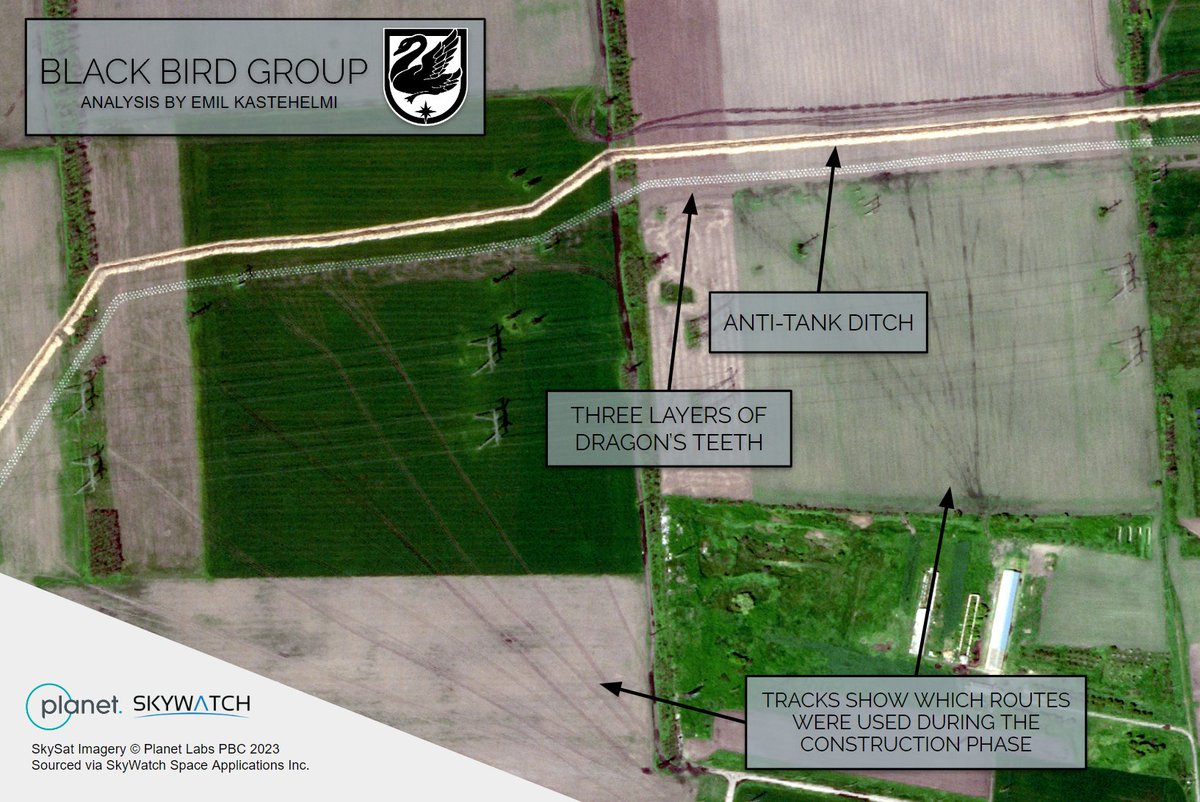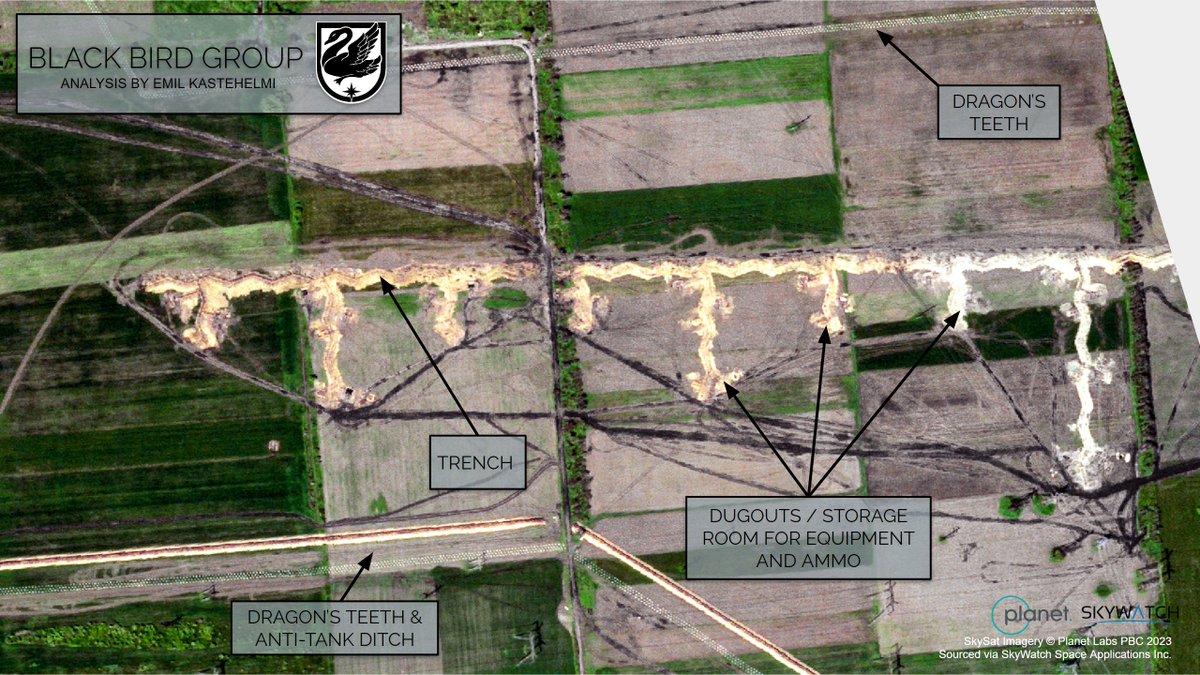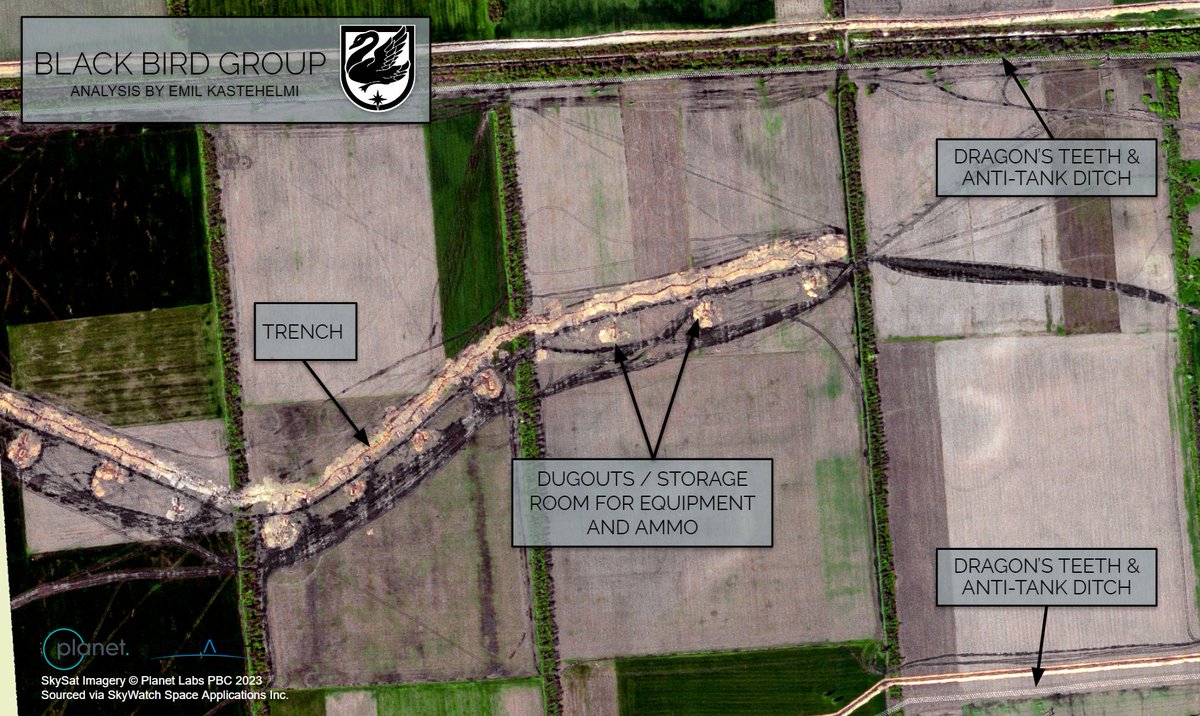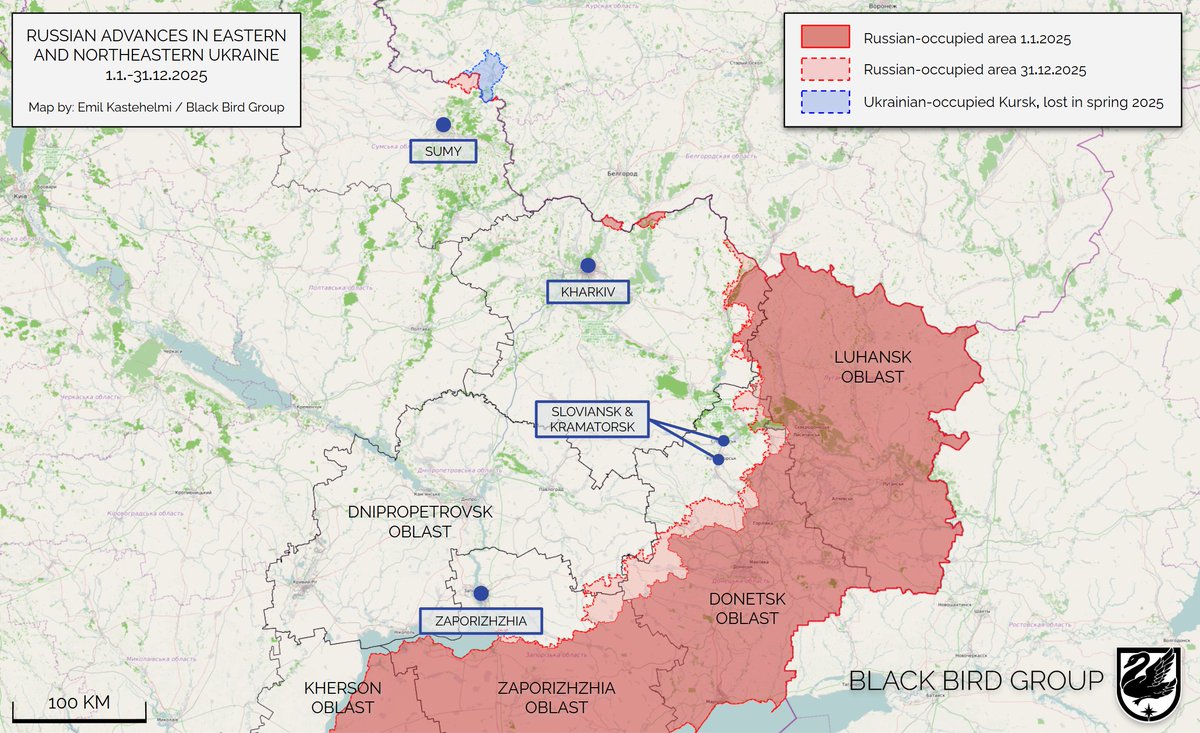Ukraine is continuing the counterattack in the Melitopol direction. It is the most fortified part of the whole front, with roughly two main defensive lines and multiple secondary layers of defense.
Now we will take a look at the 2nd one of the two main defensive lines. 1/
Now we will take a look at the 2nd one of the two main defensive lines. 1/

To give you perspective, in this thread we're examining the fortifications near Mykhailivka. The area is still 25-30km from the frontline, so most likely no fighting will take place here in the near future. 2/ 

In the first picture we have a part of a nearly 50 kilometre long anti-tank ditch, which runs almost without breaks from the Dnipro river to Tokmak. In the second picture there is a part of the ditch witch surrounds Mykhailivka from all sides expect from the south. 3/ 



Infantry fighting positions are built between the anti-tank obstacles. Connected to the trench there are dugouts and other relevant components, like room for ammo and equipment. When finished, usually the dugouts and trenches leading to them are covered with a roof. 4/ 



Behind the trenches and the two anti-tank obstacle lines there are some additional fighting positions and vehicle shelters. 5/ 

This was only a snapshot of the most fortified area in occupied Ukraine. In the big picture, it's part of a network of fortifications that spans hundreds of kilometres all the way from Crimea to Northern Luhansk. This is a real challenge for AFU, as we have seen already. 6/
Victory in this area will require careful planning and extensive training. "Just shoot it with HIMARS" is not the answer. If it was, Ukraine would not still be struggling in the first line of defense. Even though these fortifications are static and very visible, they work. 7/
Our team at @Black_BirdGroup thanks @wihurinrahasto for giving us funding for our project and making this thread possible.
Our interactive map of the war in Ukraine can be found here. We update it almost daily. 8/8
scribblemaps.com/maps/view/The-…
Our interactive map of the war in Ukraine can be found here. We update it almost daily. 8/8
scribblemaps.com/maps/view/The-…
• • •
Missing some Tweet in this thread? You can try to
force a refresh











